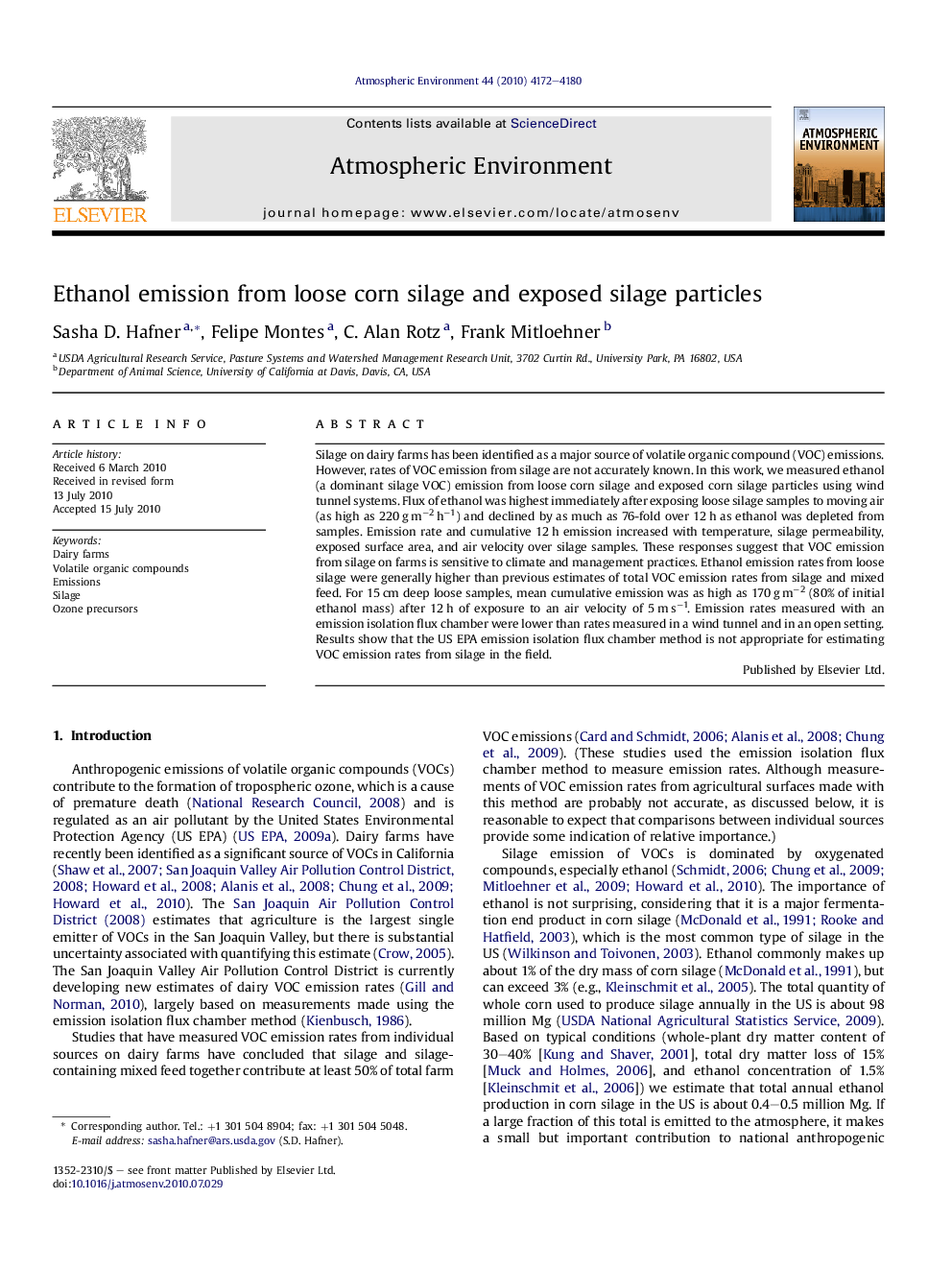| Article ID | Journal | Published Year | Pages | File Type |
|---|---|---|---|---|
| 4440391 | Atmospheric Environment | 2010 | 9 Pages |
Silage on dairy farms has been identified as a major source of volatile organic compound (VOC) emissions. However, rates of VOC emission from silage are not accurately known. In this work, we measured ethanol (a dominant silage VOC) emission from loose corn silage and exposed corn silage particles using wind tunnel systems. Flux of ethanol was highest immediately after exposing loose silage samples to moving air (as high as 220 g m−2 h−1) and declined by as much as 76-fold over 12 h as ethanol was depleted from samples. Emission rate and cumulative 12 h emission increased with temperature, silage permeability, exposed surface area, and air velocity over silage samples. These responses suggest that VOC emission from silage on farms is sensitive to climate and management practices. Ethanol emission rates from loose silage were generally higher than previous estimates of total VOC emission rates from silage and mixed feed. For 15 cm deep loose samples, mean cumulative emission was as high as 170 g m−2 (80% of initial ethanol mass) after 12 h of exposure to an air velocity of 5 m s−1. Emission rates measured with an emission isolation flux chamber were lower than rates measured in a wind tunnel and in an open setting. Results show that the US EPA emission isolation flux chamber method is not appropriate for estimating VOC emission rates from silage in the field.
